The Pelican Symbol
|
![[pclogo]](pclogo.gif)
The pelican is a legendary symbol of commitment to the service of others, especially those who are weak and most vulnerable to physical and/or psychological violence. See
The Physiologus,
The Symbolism of the Pelican,
Adoro te devote ...,
and a very instructive sermon by Rev. Sylvia Roberts.
Pie Pelicani (Holy Pelican)
The myth is one of a mother pelican who, in order to feed her young, rips a hole in her breast and feeds them of her own flesh and blood. The ancients saw in it a marvelous feminine image of Christ as Mother. Her wings encompass all from Lazarus and Dives to the wedding feast and the bridal couple keyed in the arch as Christ's love shared in the Eucharistic meal embraces us all. Loyola Chapel, Concordia Univ.
![[yysolidarity]](yysolidarity.jpg)
Symbol of Solidarity
![[yysustainability]](yysustainability.jpg)
Symbol of Sustainability
| |
Religious Traditions
![[religionsworld]](religionsworld.jpg)
Unity in Diversity
World Religions
|
The following are links to information about some of the major religious traditions and approximate numbers of adherents:
Christianity (2.5 billion)
Islam (1.4 billion)
Hinduism (1 billion)
Budhism (375 million)
Sikhism (23 million)
Judaism (14 million)
Bahá'í (7 million)
For more information, see World Religions, which includes global maps showing geographic religious distributions.
| |
SSNV Call for Papers
|
This newsletter is now seeking scholars willing to write (pro-bono) short articles about the impacts of all forms of secular and religious violence on human solidarity and ecological sustainability, as well as critical reviews of this work from the perspective of various religious traditions, i.e., Christianity, Buddhism, Judaism, Islam, Hinduism, Sikhism, Bahá'í, etc.
Articles should be 1000 words minimum and 5000 words maximum. Please submit only material that has not been already published elsewhere. The author's CV should be submitted with the paper. The newsletter is published monthly, but there are no specific deadlines. Papers approved by the editor will be included as an "invited paper" when time and space allows.
Email your submission to the editor, Luis T. Gutierrez.
| |
Conservation
& Society
Conservation & Society is a journal exploring linkages between society, environment, and development. Open access to full text articles (PDF) for all issues. Editor-in-Chief: Kamaljit Bawa, University of Massachusetts, Boston, USA. Executive Editor: Kartik Shanker, Centre for Ecological Sciences, Indian Institute of Science, Bangalore, India.
![[conservation-society]](conservation-society.gif)
Volume 5, Number 1, 2007
This issue of contains a special section on the politics of engagement between biodiversity conservation and the social sciences. The special section contains 4 articles and a synthesizing introduction, all exploring links between biodiversity conservation and the socio-political sciences. The articles can be downloaded free of charge. For more information about Conservation & Society, visit the journal homepage.
Memorable People
![[lelandstanford]](lelandstanford.jpg)
Leland Stanford
1824-1893
American Tycoon-Politician-Educator
Founder, Stanford University
"The children of California shall be our children .... We deem it of the first importance that the education of both sexes shall be equally full and complete, varied only as nature dictates."
For more information about
Leland Stanford:
Leland Stanford
Leland Stanford - Governor
Leland Stanford - Senator
Leland Stanford - Racist Mistake
Central Pacific Railroad
Stanford University
Stanford University History
Sign of the Times
![[revelizabethshipp]](revelizabethshipp.jpg)
Rev. Elizabeth Shipp
Wymondham Abbey,
Norwich, England
Hillary for President
![[hillary-september]](hillary-september.jpg)
Wife, Mother, Lawyer, Stateswoman
Senator from New York
Next President of the USA
Want to know why Hillary is
the best choice for president?
Watch the Videos
Worth Visiting
The following sites are worth visiting:
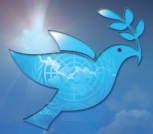
International Peace Day
September 21, 2007

International Catholic Peace Movement
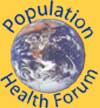
Population Health Forum

UC Atlas of Global Inequality

Comprehensive resource including:
Encyclopedia of Earth
Earth Forum
Earth News

Our World in Balance

Intute: Comprehensive Web Resources
for Education and Research
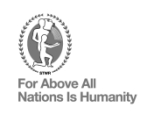
Share the World's Resources (STWR)
Campaigning for global economic and social justice. How?
See the STWR Global Focus

Matriarchy International
Based on Heide Goettner-Abendroth's
Theory of Matriarchal Society
Could this be an alternative to patriarchy?

Center for Citizen Media
Grassroots media and citizen journalism

Humiliation in a Globalizing World
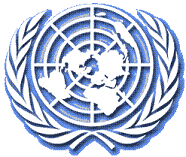
United Nations

U.N. Web Site Locator

K-K12
Education
|

|
Announcements
and CFPs
MANAGING INTERNATIONAL DEVELOPMENT
Special Issue, The Journal of Applied Behavioral Science. We invite submissions to a special issue focused on how organizational development and change (OD&C) is managed in international contexts. Referring to implementation of established change and development models across boundaries and within different cultural contexts, national or geographical settings, and organizations with international, transnational, or multinational memberships,we encourage rich, thick descriptions of how a change process unfolds, how change processes are adapted, how change processes can be evaluated, and how emerging change models can be noted for further development. These descriptions could be supported or underpinned by quantitative data if desired. Please follow JABS guidelines; submit manuscripts by e-mail prior to March 15, 2008, to: Chung-Ming Lau, Jean E. Neumann, Christopher G. Worley.
ICAES 2008
This is the 16th world congress of the International Union of Anthropological and Ethnological Sciences. The theme of the conference is "Humanity, Development, and Cultural Diversity." The conference will take place in Kumming, China, 15-23 July 2008. The points of contact are Prof. Zhang Haiyang and Prof. Zhang Jijiao. Application and registration forms and other information can be obtained from the conference website.
WWWWMM08
Mundos de Mujeres/Women's Worlds 2008 is "the most important congress on
academic research on gender and women and feminist social movements." This major international event will bring together people from all over the world - researchers, specialist, activist and major international public figures to discuss the key issues that impact women. A key goal is to fight against social injustices and gender inequalities. The 2008 interdisciplinary Congress has selected three concepts: frontiers, dares and advancements to address a spectrum of themes and issues that can help us understand the world we live in. Universidad Complutense de Madrid, 3-9 July 2008. Points of contact: Dr. Claudia Malacrida, Dr. Leslie Roman, Conference Secretariat.
SOCIAL SIMULATION CONGRESS
Next year the 2nd World Congress in Social Simulation (WCSS'08) will take place on July 14-16, 2008, at George Mason University, hosted by the Center for Social Complexity, just outside Washington DC. Additional information will follow soon, including the official call for papers, website for early registration, scientific committees, lodging information, and preliminary program. The WCSS series is a joint collaboration of the regional international professional organizations: European Social Simulation Association ESSA; North American Association for Computational Social and Organizational Sciences NAACSOS; and
Pacific Asia Association for Agent Based Social Systems Science PAAA. For more information contact Professor Claudio Cioffi-Revilla, Director of the Center for Social Complexity at George Mason University.
U.S. YOUTH NETWORK FOR
SUSTAINABLE DEVELOPMENT
The SustainUS Agents of Change program is now accepting applications to join the SustainUS youth delegation to the Thirteenth session of the Conference of the Parties to the UN Framework Convention on Climate Change and second meeting of the Parties to the Kyoto Protocol (COP13 and COP/MOP3), which will be held in Bali, Indonesia, from December 3-14, 2007. The SustainUS delegation, comprised of key leaders in the youth climate movement, will have the unique opportunity to represent American youth at the COP, which will determine the future of international policy on climate change. Delegates will work with each other and with international youth in advance of the conference to educate themselves, develop policy priorities, acquire skills in effective lobbying, and engage the broader youth population in a conversation about international climate policy. For more information contact Agents of Change.
NOVEMBER 19, 2007
CHILD ABUSE PREVENTION DAY
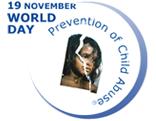
Women's World Summit Foundation
Sponsored by WWSF
SCIENCE, POLICY, AND ENVIRONMENT
Sponsored by the National Council for Science and the Environment (NCSE). January 16-18, 2008. Washington Convention Center, 801 Mount Vernon Place, N.W., Washington, DC 20001. Focus on Climate Change: Science and Solutions Resources. Please direct questions on NCSE's next conference to NCSE 2008 Conference on Climate Change.
GENDER AND WELL-BEING
A symposium on "Gender and Well Being: The Role of Institutions from Past to Present." Madrid, Spain, 25th-27th June 2008. From the CFP: "There are fundamental questions about the origins and nature of individual and social well-being in Europe, as well as on its sustainability. The symposium's aim to develop a new concept of well-being, examining the socially gendered indicators, actors and processes affecting the production and access to well-being across the life-course. This reflection is meant to be conducted at a crossroads between history, social science and economy." Call for papers opened till 20th September 2007.
Send abstracts to Paloma de Villota with copy to the
Secretary by this Form. Selection of abstracts will be made by the end of October 2007 and will be communicated to authors before 15th November 2007. Papers must be sent by e-mail no later than 26th May, 2008.
CHALLENGING THE CULTURE OF DEATH
The aim is a cross-cultural dialogue imagining a political and symbolic world based on life not death: mercy not sacrifice.
"A multi-disciplinary event, we aim to bring diverse approaches to our deliberations under the following headings: Theory, Resistance, and Theology. Priority will be given to those taking a multi-disciplinary synchronic perspective, and imaginative approaches to presenting that maximize pre-event preparation (making papers available in advance) and interactive modes of engagement with participants. We also hope to balance incisive critique with concrete strategies for practical action." Venue: Trinity College, Dublin. Date: 2-4 November 2007. Sponsors: Institute for Feminism and Religion and Centre for Gender and Women’s Studies, Trinity College, Dublin. Please address questions to Mary Condren or Challenging Death.
PEACEFUL COEXISTENCE
International Conference on Peaceful Coexistence, Erasmus University Rotterdam, The Netherlands, 23–24 November 2007. The need for peaceful co-existence between Muslims and non-Muslims within and between nations has long been recognized. The much publicized failures in relations in recent years, which are both a cause and effect of the situation in many parts of the world – not just the Middle East – should spur all right-minded people to re-double their efforts to sustain the hope for peaceful co-existence. For further information please e-mail: Peaceful Coexistence or visit the Peaceful Coexistence Conference web site.
FORMATION OF NEW PUBLICS
Religion has the capacity to form intentional groups and communities as well as to mobilize agents to work for certain goals. This formation of communities and mobilization of resources to achieve goals is actually consonant with the term "formation of publics" as used by C. Wright Mills. This conference will explore the new publics of the 21st century. Publics here may be individuals and/or groups who attempt to create knowledge and/or achieve certain actions using religious ideals, beliefs, and/or symbols. Venue: University of Santo Tomas, Manila. Date: 23-26 January 2008. Deadline for abstracts: 21 July 2007. Enquiries: Esmeralda Sanchez.
BIOLOGY AND RELIGIOUS BEHAVIOR
Call for Papers: "The Biology of Religious Behavior: A Human Ethology Perspective on Religion." Care to spend time in Italy studying psychology and religion? Then consider submitting a paper to the International Society for Human Ethology meeting in Bologna, Italy, July 14-18, 2008. Better yet, there is a possibility for funds to support your travel to Bologna for the conference. Sponsored by the Society of Human Ethology. Bologna, Italy, 14 – 18 July, 2008. The deadline for abstract submission is 1 March 2008. For more information visit the ISHE2008 conference website. Points of contact are Marco Costa, University of Bologna, Italy and Luca Tommasi, University of Chieti, Italy. See also the PsyRel blog of Jay Feierman.
EU GENDER EQUALITY
An expert meeting on gender equality in the enlarged European Union is underway (between July 2006 and September 2007) as part of a current research project on gender equality in the enlarged EU. It is being carried out as a cooperation between Social Change and the Institute of East-European History. The aim is to examine the possibilities, chances and obstacles for the future gender equality policy on the EU level. The discussion in this interdisciplinary and transnational forum will focus on the implementation of the EU’s gender equality regulations, on independent national policies, on the history and role of the women’s (rights) movement and the current situation of women, especially in the new member countries Slovenia, Czech Republic, Hungary and Bulgaria, but also in the "old" member states like Germany, France, and Austria. Points of contact: Petra Ziegler and Verena Kaselitz at the Institut für Osteuropäische Geschichte der Universität Wien, Social Change Institut für Innovation in der Genderforschung und Gewaltprävention.
REPRODUCTIVE & SEXUAL HEALTH
The 4th Asia Pacific Conference on Reproductive and Sexual Health and Rights will take place 29th to 31st October 2007, Hyderabad, India. The conference will provide a platform for people with diverse perspectives, expertise and experience to exchange ideas, discuss and debate issues of concern, and learn from each other about sexual and reproductive health and rights, with specific reference to the implementation of the Programme of Action of the International Conference on Population and Development (ICPD, 1994). The theme of the Conference is "Exploring New Frontiers in Sexual and Reproductive Health and Rights". For more information, please visit our website, 4APCRSH.
POLITICS OF HUMAN TRAFFICKING
CFP by the St. Antony's International Review (STAIR), a peer-reviewed academic journal of international affairs based here at St. Antony's College, University of Oxford. A forthcoming issue of STAIR will focus on the theme of human trafficking. Abstracts due August 30, 2007. Papers due December 30, 2007. A copy of the CFP and other information can be obtained via email to Ms. Heidi Stöckl, Associate Editor, St. Antony's International Review (STAIR).
VIOLENCE IN CLINICAL PSYCHIATRY
This will be the 5th European Congress on Violence in Clinical Psychiatry. Congress theme: "Best Evidence Based Practices on
Prevention, Treatment and Management of Violence at the Individual, Institutional and Governmental Level." 25 - 27 October 2007, 0, Amsterdam. From the invitation: "Violent and aggressive behaviour is a complex phenomenon of great importance in society as well in clinical psychiatry. Violence has become a global problem crossing borders, work settings and occupational groups. Within clinical psychiatry, violence is one of the major obstacles for effective treatment and rehabilitation, and with regard to health care workers, violence is the major occupational health hazard. Therefore a comprehensive institutional approach to this problem at all organizational levels is needed." See the conference website. Point of contact: Nico Oud.
EDUCATION FOR PEACE 2007
Announcing the First International Education for Peace Conference-2007: Strategies for Building a Civilization of Peace at Granville Island in Vancouver, B.C., Canada (14-17 November 2007). The primary goal of the conference is to contribute to the worldwide efforts to create a civilization of peace. Essential to this undertaking is life-long peace education at home, in schools, and in the community, with its focus on the integral role of all members of society-children, youth, and adults-and with the equal participation of women and men in the administration of human affairs. Point of contact: Stacey Makortoff.
Insightful Art
ABOUT HUMAN SEXUALITY
Below is an image of Tiffany Sankary's beautiful painting, Spine.
Spine
Tiffany Sankary
USED WITH PERMISSION
Spine is an excellent representation of the psychoanalytic insight about human beings having both male (animus) and female (anima) elements in their psychological make-up. In heterosexual persons, the animus is dominant in men, and the anima is dominant in women; but there is anima in men and animus in women. Could it be that being homosexual entails a shift in dominance (actually, a shift toward balance between anima and animus)? If so, it would be wrong to say that homosexuality is an "objective disorder." Granted that heterosexuality is by far the most frequent kind of human sexuality, it does not follow that homosexuality is a pathological condition. We need to learn more about this issue. Sankary's painting provides a good starting point for reflection.
Slideshow
ABOUT HONOR KILLINGS
Over 5000 women and girls are killed every year by family members in so-called 'honor killings', according to the UN. These crimes occur where cultures believe that a woman's unsanctioned sexual behaviour brings such shame on the family that any female accused or suspected must be murdered. Reasons for these murders can be as trivial as talking to a man, or as innocent as suffering rape.
Site Search
![[fusionbot]](fusionbot.gif)
Downloads
SSNV-MDG
Knowledge Taxonomy
and
Links Directory
The taxonomy and database can be downloaded as either an HTML web page or an excel spreadsheet (the html code is embedded in the excel file for ease of modification).
Download
HTML Web Page
Download
Excel Spreadsheet
World News
Donations
Would you like to support
this free newsletter?
Donations are gratefully accepted.
To donate via PayPal:
To donate via Amazon:

|
"True reconciliation does not consist
in merely forgetting the past."
Nelson Mandela, South Africa
|
|
|
Page 1
|
|
| |